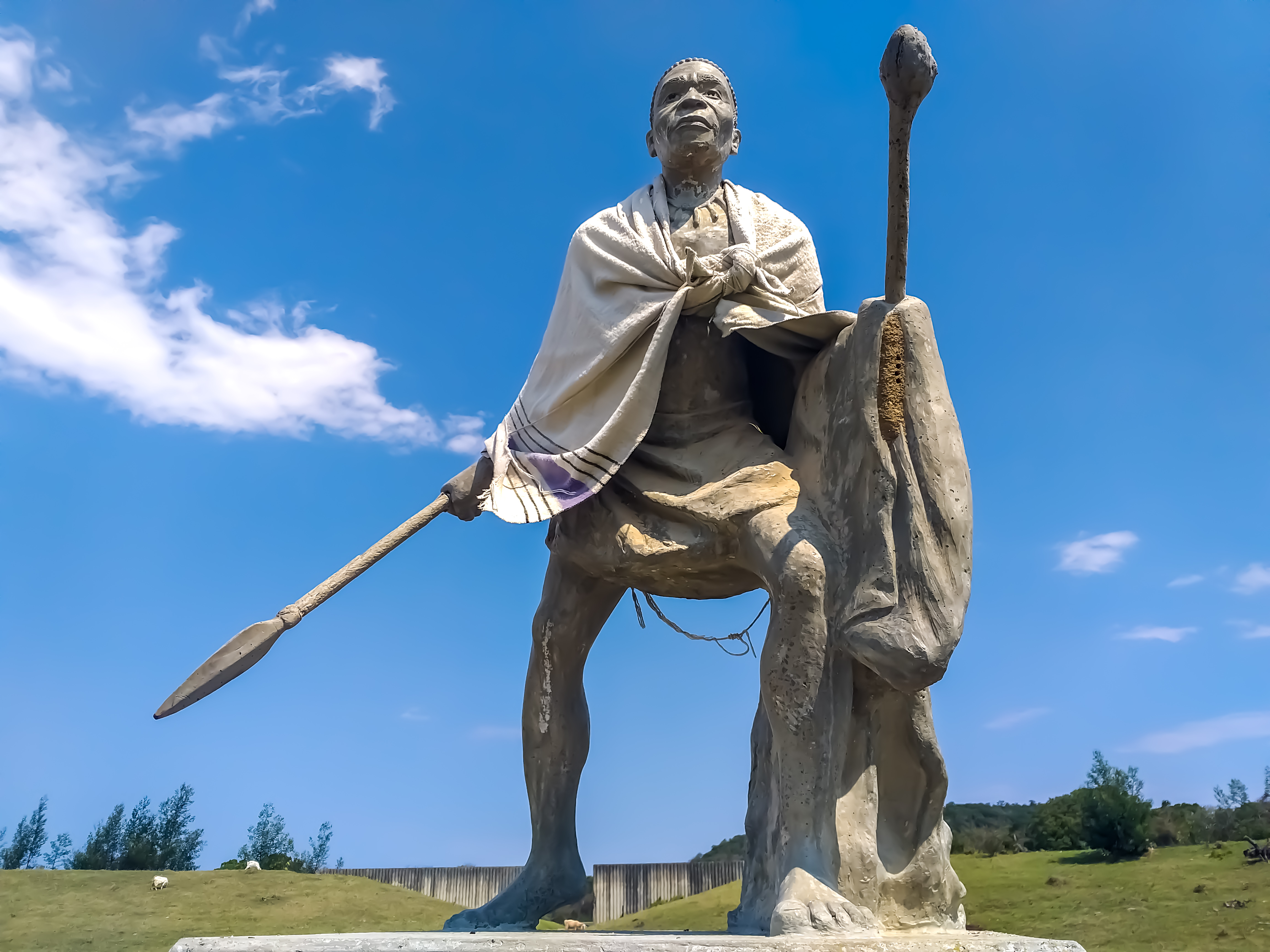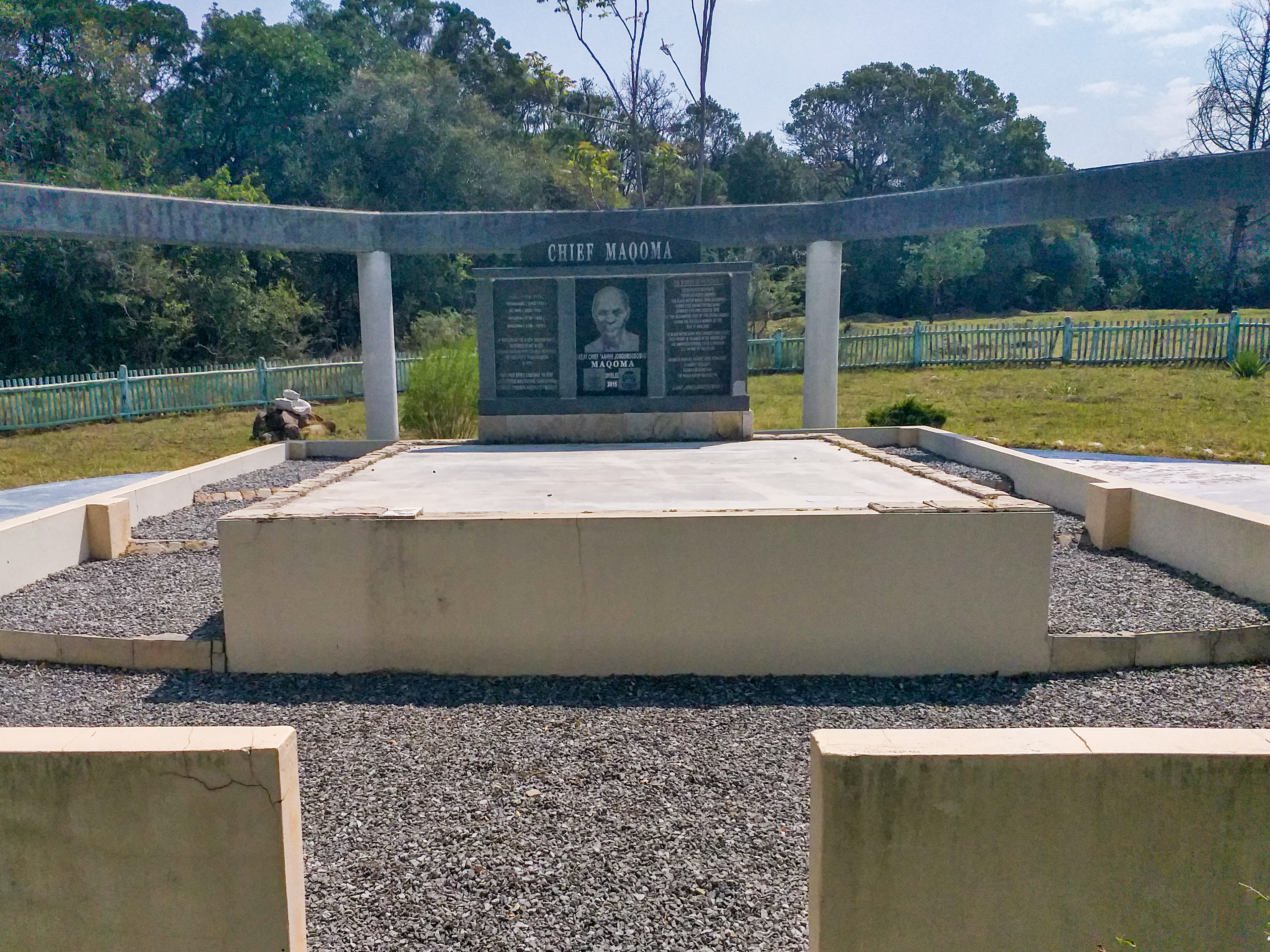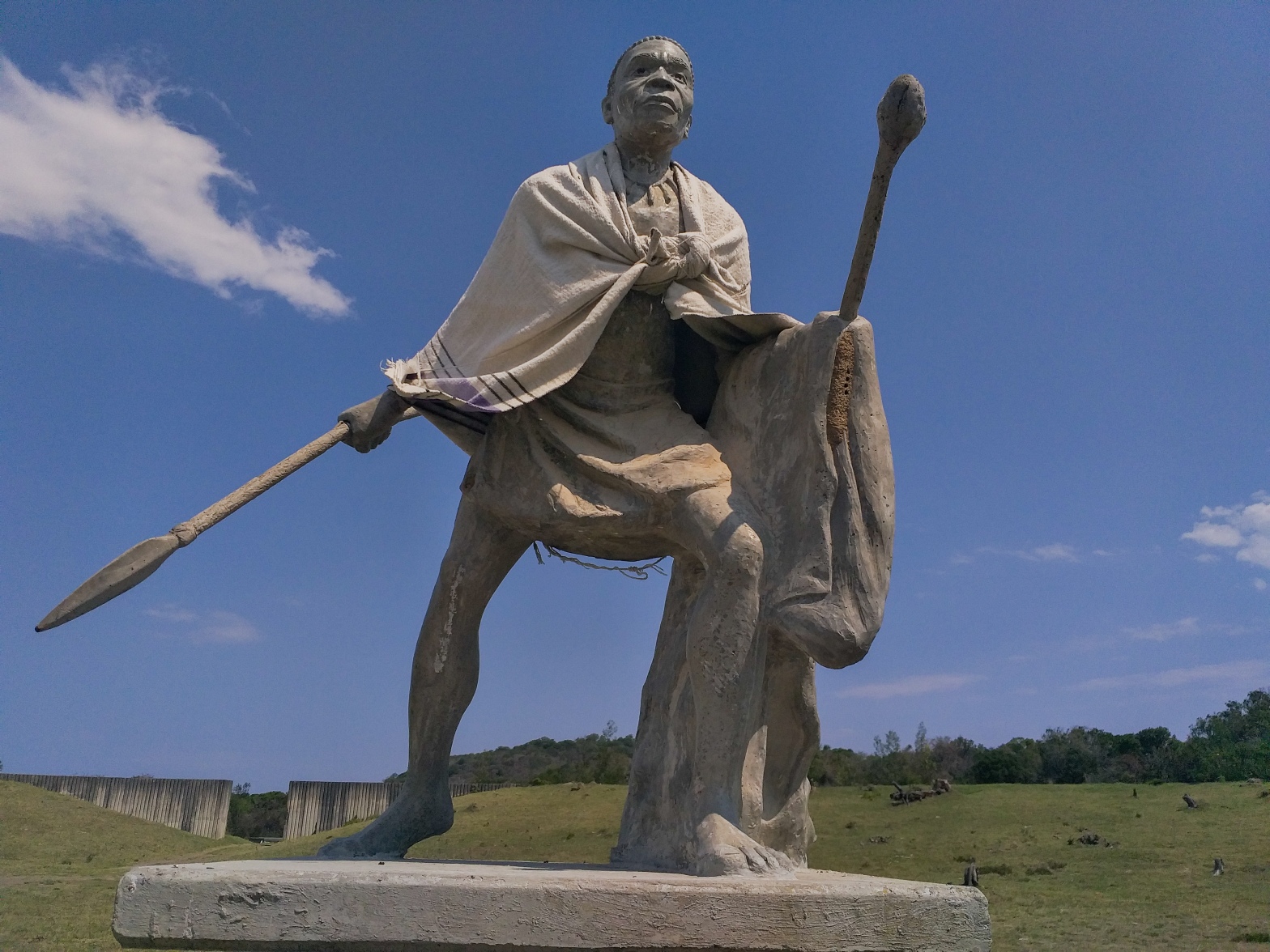The monument to Nkosi Jongumsobomvu Maqoma, at the summit of the Ntaba ka Ndoda mountain, is a commemoration of one of South Africa’s most influential warrior kings, at one of its most historical sites. It bears complex witness to the enduring legacy of an extraordinary life lived in constant struggle, of one of South Africa’s earliest true heroes.
The name Ntaba ka Ndoda is directly translated from isiXhosa to mean ‘mountain of man’ (or ‘men’), but is said to have been named for Chief Ndoda of the Khoi, who are regarded as one of the First Nations of South Africa. The mountain just outside King Williams’ Town, just off the R352 between Dimbaza and Keiskammahoek in the Amathole region of the Eastern Cape, was an important rain-making site for the Khoi of the region, and also hosted the signing of a crucial peace treaty between the Khoi and Maqoma’s amaXhosa nation in the late eighteenth century.
At the time of the treaty, the borders of what was to become the British colony at Cape Town were aggressively expanding eastward, and the ancestral lands of the Khoi and amaXhosa in the south-east of the country were coming under severe threat. Most Xhosa tribes fiercely resisted colonial expansion, and this gave rise to a series of nine clashes known as the Frontier Wars, or the Eastern Cape Wars of Dispossession, that sporadically flared up between 1779 and 1878.
One of the most significant and renowned Xhosa leaders during these wars was Nkosi (or ‘King’) Maqoma. Born in 1798 to Nothonto, the right- hand wife of Nkosi Ngqika of the Rharhabe division of the Xhosa nation, his slight and lithe stature as a boy caused him at first to be considered ill-suited for battle, but his intellectual acuity, military prowess, tactical acumen and strategic brilliance soon moulded him into a most respected and feared leader, on both sides of the Frontier.
As a young leader, Maqoma initially attempted to reach compromise with the settlers through placatory diplomacy, but incessant settler raids forced his and his half-brother Tyali’s hand, and they finally took up arms against the colony in 1834 to prevent catastrophic dispossession of their ancestral lands.
Maqoma regularly conducted tactically masterful guerrilla campaigns against British forces in his Amathole mountains, hounding and harassing them repeatedly, and inflicting several crushing defeats on an army that was far superior in armour and weaponry. Ntaba ka Ndoda played a significant role in Maqoma’s campaigns. The mountain had provided protection and cover during one of his earliest and most important battles, and was also the scene of pitched battles against the British in the War of the Axe (1834-1835), the War of Mlanjeni (1850-1853) and the War of Nchayechibi (1877-1978).
When he was finally captured for the first time in 1857, he was among the first political prisoners to be imprisoned on the infamous Robben Island in Table Bay, which would later also hold anti-Apartheid heroes like Nelson Mandela and Walter Sisulu.
After serving an initial sentence of 12 years, Maqoma returned to his home in 1869 to continue his struggle against settlers and British forces. He was recaptured in 1871, and again imprisoned on Robben Island, where he died in 1873, and was then buried in an unmarked grave. An Anglican chaplain visiting the prison at the time observed that Nkosi Maqoma ‘cried bitterly, before dying of old age and dejection.’
After his death, colonial historians attempted to undermine Maqoma’s legacy, depicting him as an absconder from his duties and regular abuser of alcohol, a charge that is vociferously denied by his descendants, and convincingly countered by oral histories and contemporary accounts of the man.
In August 1978, Maqoma’s grave on Robben Island was identified with the aid of Charity Sonandi, a diviner, and his remains were re-interred at the summit of Ntaba ka Ndoda. Even in death, the warrior king could find little peace.
The project was commissioned by Lennox Seebe, the president of the Ciskei ‘homeland’, a nominally independent puppet state installed by die Apartheid-era South African government, and many saw the installation of the monument as a cynical attempt by Seebe to lend a veneer of cultural legitimacy and credibility to his quasi-presidency. The monument took design cues from the architecture of Dutch Reformed churches, a whites-only denomination that was the de-facto church of the Apartheid state, and it was never accepted or supported by the local communities, who were disgusted by its attempts to legitimize an oppressive and discriminatory government.
The memorial to Maqoma sits at the summit of Ntaba ka Ndoda, at the end of a gravel road that initially passes through traditional homesteads, then climbs slowly through near-impenetrable Thicket vegetation, and terminates at the very left wing of the imposing monument. There is no access control, and the grounds are mostly deserted, save for the sheep, goats and horses that graze on its overgrown lawns.
The gravesite is situated at the south-eastern edge of the summit. The gravestone carries an impression of one of the only known images of Maqoma, and panels on each side have poetic praise verses honoring his legacy and bloodline. The gravestone sits on a raised concrete platform, in a small garden that is overgrown and ill-tended. Decay and neglect seem to characterise the entire memorial, save for one, outstanding aspect: the concrete statue standing on a 2-meter high plinth, at the very centre of the memorial amphitheatre.





The statue depicts Maqoma in a forward leaning, active combat pose, as if he is about to order and then lead a ferocious infantry charge. With an assegai in his right hand, and a knopkierie in his left, Maqoma is looking up and directly ahead, staring down his enemy straight through the parting in the central tower of the Apartheid-era monument. His pose is imbued with a sinewy, tough strength, and his jaw is set in the kind of serene, confident manner that seems to suggest that Maqoma was a reluctant warrior, but that he never ventured into battle not thoroughly convinced of victory, or of the righteousness of his cause.
